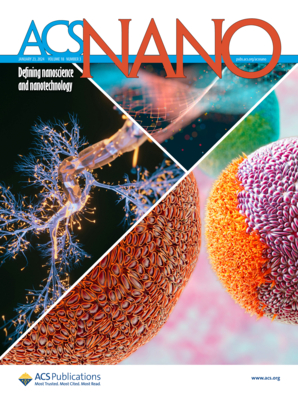A Wearable Dual-Modal Patch for Rapid Pre-Hospital Diagnosis of Acute Myocardial Infarction.
IF 16
1区 材料科学
Q1 CHEMISTRY, MULTIDISCIPLINARY
引用次数: 0
Abstract
Timely diagnosis of acute myocardial infarction (AMI) during the prehospital phase is crucial to decrease mortality rates. Given that certain patients may not exhibit typical alterations in their electrocardiogram (ECG) patterns during the initial phases, the diagnosis of AMI is typically achieved by simultaneously assessing ECG results and myocardial injury biomarkers. This procedure requires the use of specialized equipment and trained personnel that are only available in hospitals, which may lead to possible delays of several hours. The development of a device that can detect both ECG and acute myocardial injury markers in the prehospital setting remains a significant challenge. In this study, a wearable dual-modal patch that combines a surface-enhanced Raman scattering (SERS) microneedle array with flexible electronics is introduced for the prehospital diagnosis of AMI. The patch allows for the noninvasive and rapid monitoring of both ECG and the levels of three myocardial injury markers in the interstitial fluid (ISF) by a portable Raman spectrometer, in accordance with the established clinical standard. This strategy was validated through experiments conducted on rats induced with AMI. The time required for diagnosing ischemia was significantly reduced to 50 min after its onset. The patch is optimally integrated into a stamp-sized band-aid, accompanied by a smartphone app for data visualization and real-time analysis. This initiative aims to facilitate the prompt delivery of interventions to reduce ischemic events.用于急性心肌梗死院前快速诊断的可穿戴双模态贴片
院前阶段及时诊断急性心肌梗死(AMI)对降低死亡率至关重要。鉴于某些患者在初始阶段可能不会表现出心电图(ECG)模式的典型改变,AMI的诊断通常通过同时评估ECG结果和心肌损伤生物标志物来实现。这一程序需要使用只有医院才能提供的专门设备和训练有素的人员,这可能导致几个小时的延误。开发一种能够在院前检测心电图和急性心肌损伤标志物的设备仍然是一个重大挑战。在这项研究中,一种结合表面增强拉曼散射(SERS)微针阵列和柔性电子器件的可穿戴双峰贴片被引入AMI的院前诊断。该贴片允许通过便携式拉曼光谱仪无创快速监测心电图和间质液(ISF)中三种心肌损伤标志物的水平,符合既定的临床标准。该策略通过AMI大鼠实验得到了验证。诊断缺血所需时间明显缩短至发病后50分钟。贴片最好集成到邮票大小的创可贴中,并附带一个智能手机应用程序,用于数据可视化和实时分析。这一举措旨在促进及时提供干预措施,以减少缺血性事件。
本文章由计算机程序翻译,如有差异,请以英文原文为准。
求助全文
约1分钟内获得全文
求助全文
来源期刊

ACS Nano
工程技术-材料科学:综合
CiteScore
26.00
自引率
4.10%
发文量
1627
审稿时长
1.7 months
期刊介绍:
ACS Nano, published monthly, serves as an international forum for comprehensive articles on nanoscience and nanotechnology research at the intersections of chemistry, biology, materials science, physics, and engineering. The journal fosters communication among scientists in these communities, facilitating collaboration, new research opportunities, and advancements through discoveries. ACS Nano covers synthesis, assembly, characterization, theory, and simulation of nanostructures, nanobiotechnology, nanofabrication, methods and tools for nanoscience and nanotechnology, and self- and directed-assembly. Alongside original research articles, it offers thorough reviews, perspectives on cutting-edge research, and discussions envisioning the future of nanoscience and nanotechnology.
 求助内容:
求助内容: 应助结果提醒方式:
应助结果提醒方式:


